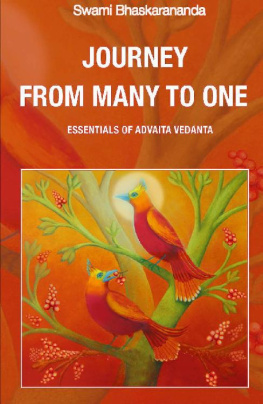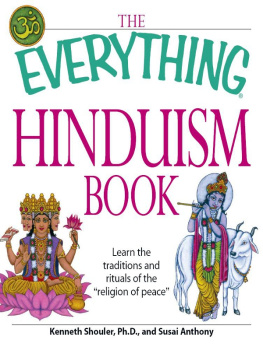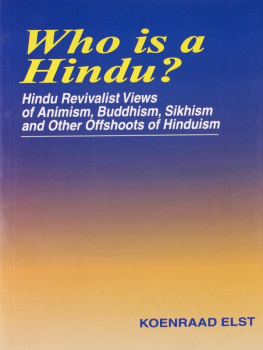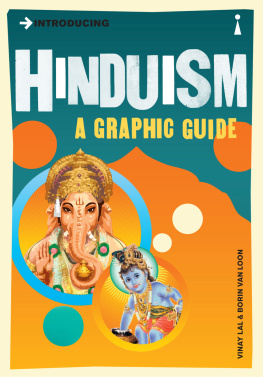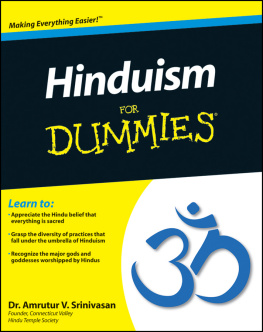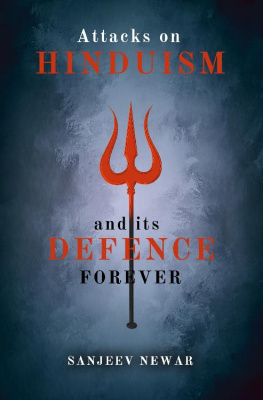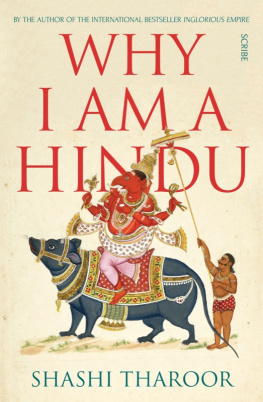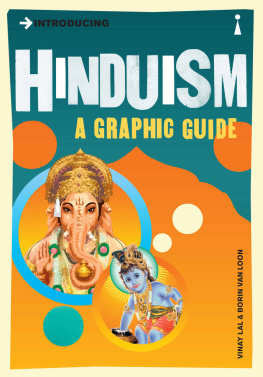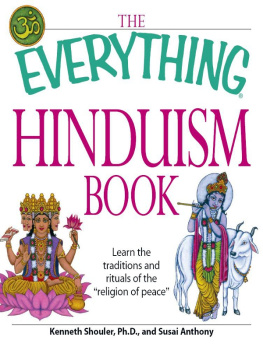THE ESSENTIALS
OF HINDUISM
A Comprehensive Overview
of the
World's Oldest Religion
by
Swami Bhaskarananda
Viveka Press

Seattle
Viveka Press, Seattle 98102
2002 by The Vedanta Society of Western Washington
All rights reserved. No part of this book may be reproduced or transmitted in any form or by any means, electronic or mechanical, including photocopying, recording, or by any information storage and retrieval system, without the written permission of the Publisher, except where permitted by law.
For more information write to:
The Vedanta Society of Western Washington
2716 Broadway Avenue East, Seattle, WA 98102
Phone: (206) 323-1228
Email: society@vedanta-seattle.org
www.vedanta-seattle.org
1st edition 1994
2nd edition 2002
Reprintings: 2005, 2009
Electronic Publication 2010
Publishers Cataloging in Publication
(Prepared by Quality Books Inc.)
Bhaskarananda, Swami
The Essentials of Hinduism : a comprehensive overview
of the worlds oldest religion / by Swami Bhaskarananda.
-- 2nd ed.
p. cm.
Includes bibliographical references and index.
LCCN: 2001091048
ISBN 1-884852-04-1
1. Hinduism. I. Title.
BL1202.B494 2002 294.5
QBI01-200710
Humbly dedicated to
Swami Vivekananda
who was the first
to make Hinduism known to
North America
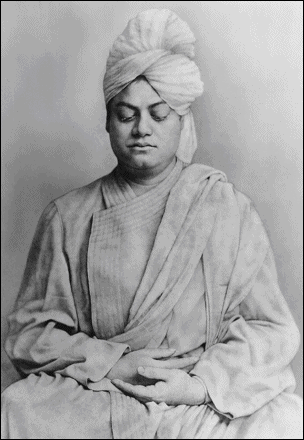
Swami Vivekananda
The picture on the front cover depicts the Paramahamsaa mythological swan with the ability to drink the essential part of milk rejecting its watery part. In Hinduism, a Paramahamsa is considered a symbol of a spiritually illumined soul who has experienced the Divine Essence of everything by rejecting the worldly lures of the senses. The goal of Hinduism is to experience this Divinity in everything and every being. Furthermore, it is seen that a Paramahamsa remains in water and yet the water never clings to its feathers. Similarly, a spiritually illumined soul lives in the world, yet is never contaminated by it.
Table of Contents
s
y
List of Illustrations and Diagrams
PREFACE TO THE FIRST EDITION
During the past twenty years of my stay in the United States, I have been invited to speak on Hinduism at many schools, colleges, and universities. I have also spoken at numerous churches and synagogues. The audiences, for the most part, have had either Christian or Jewish backgrounds, and I have often received requests from these groups to recommend a book which would help them understand Hinduism without having to go through a lot of technical details. Many have complained that the authors of the available books on Hinduism assume that the readers already know quite a bit about the subject, making their presentation difficult for a newly interested reader to understand. Moreover, the descendents of Hindu immigrants, unfamiliar with their religious heritage, ask their parents many questions which they are often unable to answer. Some of these parents requested me to write a book on Hinduism which would address these questions.
These are the reasons which inspired me to write this book. I have tried to make it easy to understand, without indulging in oversimplification. The topics covered address the questions I have most often encountered from western audiences over the last two decades. Keeping in mind that a large volume may easily daunt a college or high school student, the number of pages in this book has been kept well restrained without sacrificing the academic need of the students. An attempt also has been made to make this book helpful to high school and college teachers who cover Hinduism in their classes.
In the publication of this book the following persons have helped immensely and I acknowledge their loving assistance with deep gratitude.
Swami Atmatattwananda of the Vedanta Society of Southern California for his help and guidance during the final stages of editing the manuscript.
Biswa Ranjan Chakraborty of Calcutta for providing various illustrations and the original design upon which the cover is based.
Diane Fitzgerald for final proofreading of the manuscript.
Allen R. Freedman for his assistance with some of the diagrams and charts.
Devra A. Freedman for her help in editing and also preparing the index.
David Manning for providing thoughtful and constructive suggestions after reading the manuscript.
Charles Mathias for his many illustrations and the graphic design of the cover.
Terri Storseth for editing early copies of the manuscript.
Kathleen and Timothy Teague for help with some of the illustrations.
Charles S. Wirth for providing assistance with the typesetting and printing of the manuscript. I also thankfully acknowledge my debt to the following publishers:
Advaita Ashrama, Mayavati, India, for permission to use quotations from Great Women of India.
The Ramakrishna-Vivekananda Center of New York for permission to use quotations from The Gospel of Sri Ramakrishna.
The Vedanta Society of Southern California for permission to use quotations from Swami Prabhavanandas translation of the Upanishads.
John Benjamins Publishing Company, Philadelphia, for permission to quote Walter H. Maurers translation of the Nsadya Skta contained in Pinnacles of Indias Past; Selections from the Rg-Veda.
I shall consider my labor well rewarded if the book proves to be helpful to those for whom it is intended.
Swm Bhskarnanda
October, 1994
PREFACE TO THE SECOND EDITION
In this edition slight changes have been make in the body of the book to make it more accurate and suitable for the readers.
Swm Bhskarnanda
December, 2001
Pronunciation Guide
Sanskrit and other Indian words have been carefully and consistantly transliteratedaccording to the chart belowhoping that the correct, or at least close, pronunciation will thus be indicated.
a is to be pronounced as o in c o me
is to be pronounced as in st a r
e is to be pronounced as in b e d
i is to be pronounced as in s i t
is to be pronounced as in mach i ne
o is to be pronounced as in n o te
u is to be pronounced as in p u ll
is to be pronounced as in intr u de
ai is to be pronounced as in ai sle
au is to be pronounced as ow in n ow
bh is to be pronounced as in a bh or
ch is to be pronounced as in ch urch
chh is an aspirated version of ch
d is to be pronounced as th in th us
dh is to be pronounced as in a dh ere
g is to be pronounced as in g od
gh is to be pronounced as in le gh orn
kh is to be pronounced as in in kh orn
p is to be pronounced as in p aternal
ph is to be pronounced as f in fine
th is to be pronounced as in th aw
sh is to be pronounced as in sh all
I
HISTORY OF HINDUISM
Hinduism is one of the worlds major religions. There are about one billion Hindus today. Most are in India, but sizable populations also live in Nepal, Mauritius, Fiji, South Africa, Sri Lanka, Guyana, Indonesia (Bali) and a few other countries. Hinduism is, by most estimates, several thousand years old and holds the distinction of being the most ancient of the worlds living religions.
THE ANCESTORS OF THE HINDUS AND THEIR RELIGION

